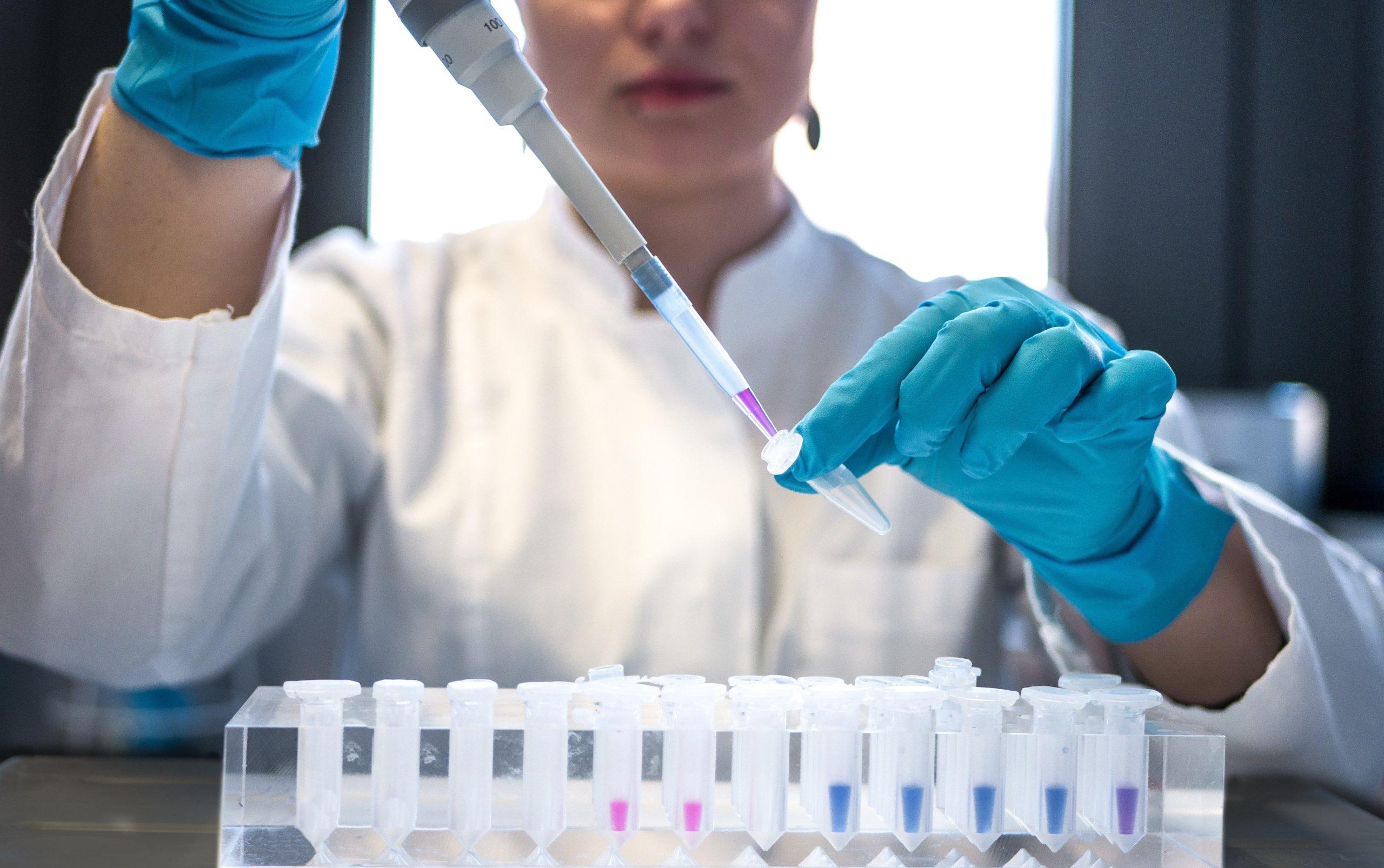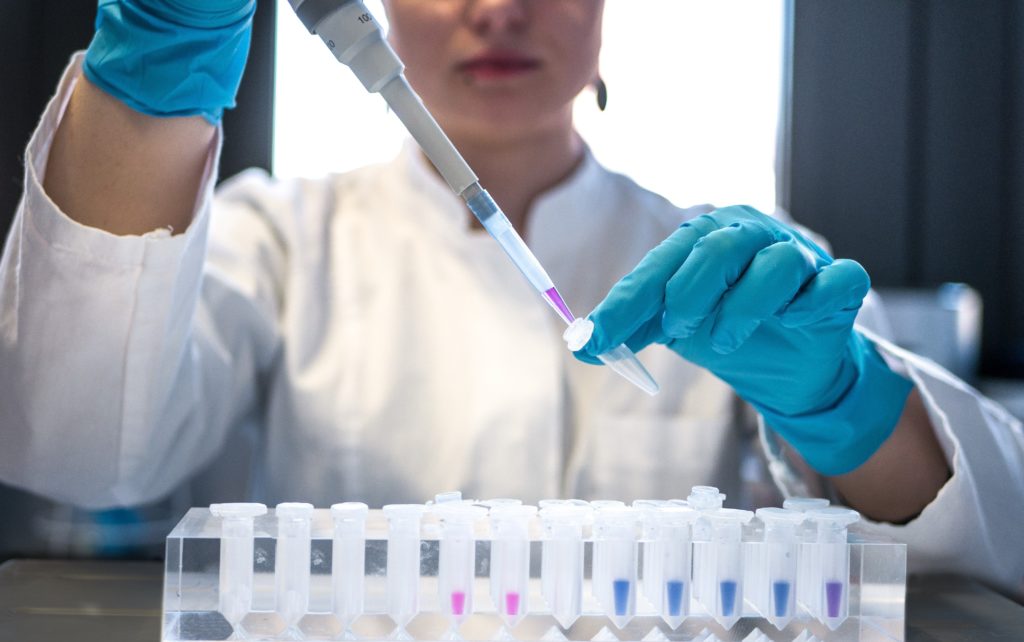Evaluating Advancements in Drug Discovery
 3 years ago
By Charlotte Di Salvo
3 years ago
By Charlotte Di Salvo

Innovations in medicinal chemistry have seen significant developments in drug discovery techniques. From drug screening to pharmacokinetics, the industry has worked hard to optimise target identification and validation for important therapeutic developments. The latest advancements have demonstrated the value of medicinal chemistry in drug discovery.
For daily articles on the latest pharma trends and innovations, as well as interviews with leading experts and in-depth industry White Papers, subscribe to PharmaFeatures.com.
The industry has seen a shift in preclinical operations like drug discovery, in which pharmaceutical organisations are outsourcing to contract research organisations (CROs). These organisations support the pharmaceutical, biotech and medical device industries in the form of research and development (R&D) on a contract basis.
In comparison to big pharma, which are operating across a number of areas and technologies, CROs are typically specialised within a particular stage of drug development, therapeutic area or technology. Therefore, they can offer the needed expertise and support a pharma needs to implement the innovations they desire.
High throughput screening: Target-based to phenotypic
High throughput screening is described as “the use of automated equipment to rapidly test thousands to millions of samples for biological activity at the model organism, cellular, pathway, or molecular level”. The robotic-assisted sample handling forms a critical part of the automated assay designs which makes HTS so popular.
HTS is a simple and cheap way of screening large libraries of small molecules in a short period of time. The robotic liquid handlers are tailored for micropipetting at great speeds, well suited to over a million screening assays conducted within one to three months. In addition to accelerating drug screening, robotic technologies reduce the likelihood of human error with regards to experiments and maintaining aseptic processes.
Traditional HTS approaches using target-based discovery (TBD) have faced a number of challenges. Thishas contributed to the shift towards phenotypic-based discovery. One of the main concerns with TBD is poor translatability. This is thought to be due to the inability of TBD to interpret the widespread action of a drug across multiple targets.
HTS using phenotypic assays, on the other hand, test drugs within relevant biological systems or pathways to identify active biological compounds. This process reveals any target interactions which support drug discovery in understanding potential drug interactions in the human body. HTS has been fundamental in this approach “which is based on trial and error but not on any prior known biological properties or mechanism of action”.
Early concerns regarding HTS focused on the vast amounts of data generated. In the early 2000s, data handling and management were originally a challenge with the execution of HTS. Since then, however, solid-support-on-bead screening (SSOBD) has reduced reactions to nanoscale levels, making it easier to process large datasets within a short period of time.
SSOBD screening is a form of small molecule screening which utilises a one-bead-one-compound (OBOC) library, where each bead carries many copies of a single compound. This is believed to hold the greatest potential for the rapid identification of novel hits against emerging drug targets.
The impact of innovations like this will create drug development pipelines with a lower budget and faster timeline to deliver products to those who need it most.
Fragment-based screening
Fragment-based drug discovery (FBDD) is a target-based method which identifies chemical fragments and optimises them towards drug-like leads and further to clinical candidates. According to a review in Cell, FBDD runs as follows:
• FBDD starts by screening libraries of low-molecular weight compounds (fragments) against the target of interest to identify ‘‘hits
• These initial hits usually have only very weak affinities, often in the millimolar or high micromolar range.
• However, when robust biophysical methods like X-ray crystallography have been employed for their detection and validation, they can be readily optimised to higher affinity with the help of structural information.
While the value of HTS continues to be seen in drug discovery, TBDD has a number of equally attractive advantages such as saving experimental cost, offering diverse hits, and exhibiting multiple ways to develop novel compounds.
HTS is typically dependent on cell activity-based assays. Unfortunately, these types of assays are not designed to detect the presence of fragments which are generally smaller and simpler than the compounds used in HTS. These assays are therefore difficult to use as the binding event is usually too weak to cause a detectable change.
NMR spectroscopy is an example of a powerful tool used in FBDD. One of the main advantages to using NMR is that the technique is “sensitive enough to identify fragments with different binding affinities. In comparison with other methods, NMR screening gives rise to less false positive hits and a mixture of fragments can be screened”.
The high sensitivity and hit rates of FBDD make it a promising approach to drug discovery. However the technicality of the process may present an obstacle, the reconstruction of fragments specifically. Finding medicinal chemists specialised in the different methods involved in FBBD could be an issue until it is more widely adopted.
One suggested solution is to implement computer-aided rational drug design and classic drug discovery guidelines, together with mathematical algorithms to optimise the outcomes of reconstruction.
CRISPR technology
The CRISPR/Cas9 system is a genome editing tool which has shown significant therapeutic potential for a multitude of diseases.These diseases are primarily caused by some form of known genetic dysfunction.The therapy of genome editing is based on the direct modification of pathological genetic sequences.
Whether it be the knock-out of a target gene, introducing a protective mutation, or adding a therapeutic transgene, CRISPR/Cas9 has shown great diversity in its ability to edit the human genome. Oncology is one therapeutic area which continues to use genome editing as a therapeutic tool for treating cancer, but CRISPR technology is showing increasing potential for drug discovery.
In a Nature review, it has been inferred that by “deliberately activating or inhibiting genes, researchers can determine the genes and proteins that cause or prevent disease, therefore identifying targets for potential drugs”. CRISPR–Cas enables nearly unlimited genetic manipulation, which is a desirable quality for researchers investigating drug resistance, precision medicine and potentially undruggable targets.
Knock-out screening using CRISPR-Cas gene editing is fast becoming a widely used application in drug discovery. This form of drug screening enables the identification of genes involved in drug resistance: “genes that code for resistance to drugs can be identified through cells that become sensitive to such compounds after the CRISPR-Cas treatment. These genes, or the proteins they encode, can then be targeted with other drugs to get around the problem of resistance”.
An additional advantage of CRISPR/Cas9 is that it has the potential of simultaneous multiple loci editing. Therefore, it offers a form of genome editing which is easier, more efficient, and more scalable in comparison to similar technologies.
CRISPR-Cas systems in drug discovery are a relatively novel concept, having only been tested in this capacity over the last few years. However, there is significant potential for this genome-editing tool in facilitating the advancement of precision medicine through drug discovery that is faster and overall more cost-effective than conventional assays.
Charlotte Di Salvo, Junior Medical Writer
Proventa International

Navigating the Complex World of Global Regulatory Affairs in Oncology
In today's fast-paced global pharmaceutical landscape, the regulatory affairs sector plays a pivotal role in ensuring the safety, efficacy, and market access of oncology drugs. As the demand for innovative cancer therapies continues to grow, understanding the intricacies of global...
8 months agoNavigating the Complex World of Global Regulatory Affairs in Oncology
In today's fast-paced global pharmaceutical landscape, the regulatory affairs sector plays a pivotal role in ensuring the safety, efficacy, and market access of oncology drugs. As the demand for innovative cancer therapies continues to grow, understanding the intricacies of global...
8 months ago
Overcoming the Hurdles: Navigating the Challenges in Oncology Clinical Trials
In the world of medical research, oncology clinical trials are at the forefront of innovation and discovery. These trials play a crucial role in advancing our understanding of cancer and developing more effective treatments. However, the path to successful oncology...
8 months agoOvercoming the Hurdles: Navigating the Challenges in Oncology Clinical Trials
In the world of medical research, oncology clinical trials are at the forefront of innovation and discovery. These trials play a crucial role in advancing our understanding of cancer and developing more effective treatments. However, the path to successful oncology...
8 months ago
Embracing a Patient-Centric Approach in Oncology Trials
In the realm of healthcare and medical research, the term "patient-centric" has gained significant traction in recent years. This shift in focus towards prioritizing patients' needs and preferences is not only transforming the healthcare industry but is also making waves...
8 months agoEmbracing a Patient-Centric Approach in Oncology Trials
In the realm of healthcare and medical research, the term "patient-centric" has gained significant traction in recent years. This shift in focus towards prioritizing patients' needs and preferences is not only transforming the healthcare industry but is also making waves...
8 months ago